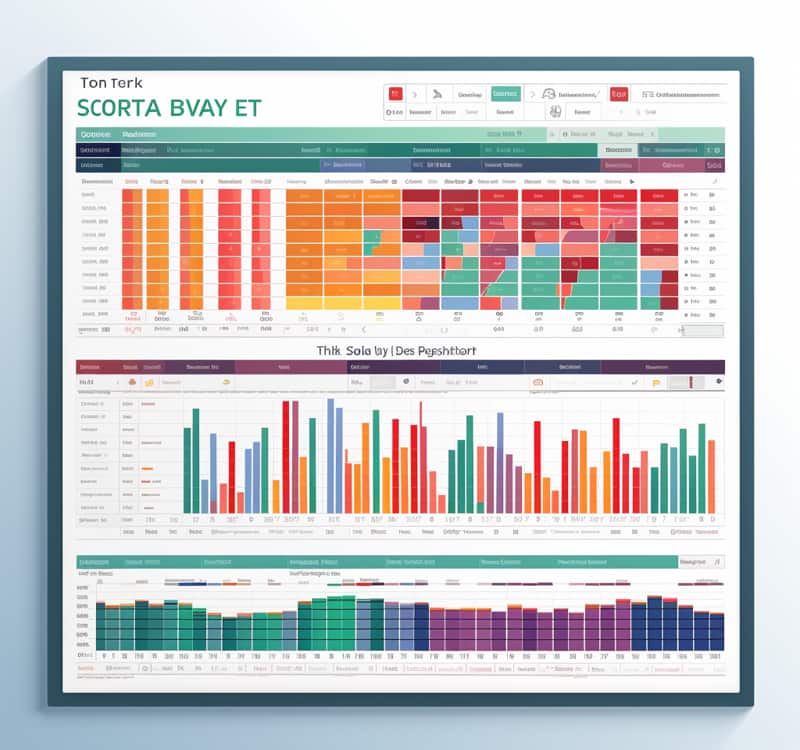SQL Joins Interview Questions | SQL Joins practical Interview Questions
SQL Joins Interview questions!!! Is Your SQL Joins Interview Ready to Help You Get That Perfect IT Job? Anyone may do well in an interview and show their expertise efficiently if they prepare well and have a positive mindset.
You shouldn’t be worried if you feel anxious or unsure about this process: No matter where you are in your SQL career, this all-inclusive guide will help you prepare for and succeed in a joins interview.
Achieving the employment of one’s dreams is the straightforward objective of our instruction.

SQL Joins Interview questions and Answers:
1. What is SQL?
SQL (Structured Query Language) is a standard programming language used for managing and manipulating relational databases.
2. What are SQL Joins?
SQL Joins are statements or commands used to fetch data from two or more tables based on a common field or column between them. Joins are essential when dealing with data present in multiple tables.
3. What are two tables that can be used for SQL Joins?
Two tables that can be used for SQL Joins are the “order table” and the “customer table”.
4. What is the purpose of using SQL Joins?
The purpose of using SQL Joins is to fetch data from two or more tables based on a common field or column between them. This is useful when dealing with data present in multiple tables.
5. What is the syntax for an inner join?
The syntax for an inner join is as follows: select the list of columns from table a followed by the inner join keyword and the name of the table that is b on the common key column from both tables.
6. What is the purpose of creating a database using the SQL underscore joins command?
The purpose of creating a database using the SQL underscore joins command is to demonstrate how inner join works in reality.
7. How can you insert data into two tables using SQL?
To insert data into two tables using SQL, you can use the INSERT INTO statement to insert the values into the appropriate table.
8. What is the command used to perform an inner join operation?
The command used to perform an inner join operation is the “on” command or operator.
9. What is the SQL query for the write join statement?
The SQL query for the write join statement is used to locate and compare data from both tables. By using the select statement and the write join statement, users can efficiently and effectively retrieve information from their respective tables.
10. How do SQL joins work in a database?
SQL joins work in a database by combining two or more tables based on a common field or column between them. This allows users to retrieve data from multiple tables at once and compare them based on specific criteria.
11. What is the purpose of SQL Joins in a database?
The purpose of SQL Joins in a database is to allow users to retrieve data from multiple tables at once and compare them based on specific criteria. This can be useful for analyzing data, identifying patterns and trends, and making informed decisions.
12. How can SQL Joins be used in a database?
SQL Joins can be used in a database to retrieve data from multiple tables based on a common field or column. For example, a join statement can be used to combine data from two tables that contain information about customers and their orders.
By using a join statement, users can retrieve data from both tables at once and compare them based on specific criteria, such as customer name, order date, and order total.
13. What are the different types of SQL Joins?
There are several types of SQL Joins, including inner join, left join, right join, and full outer join. Each type of join is used to retrieve data from multiple tables based on specific criteria, and each type of join returns different results.
14. What is an inner join in SQL?
An inner join in SQL is a type of join that retrieves only the rows that have matching values in both tables. It is used when a user wants to compare data from two tables based on specific criteria and only include the rows that have matching values in both tables.
15. What is a left join in SQL?
A left join in SQL is a type of join that retrieves all the rows from the left table and only the matching rows from the right table. It is used when a user wants to include all the rows from one table and only the matching rows from another table.
16. What is a right join in SQL?
A right join in SQL is a type of join that retrieves all the rows from the right table and only the matching rows from the left table. It is used when a user wants to include all the rows from one table and only the matching rows from another table.
17. What is a full join in SQL?
A full join in SQL is a type of join that retrieves all the rows from both tables, including the rows with no matching values. It is used when a user wants to include all the rows from both tables, even if they do not have matching values in both tables.
18. How can SQL joins be used to analyze data?
SQL joins can be used to analyze data by allowing users to retrieve data from multiple tables at once and compare them based on specific criteria.
By using a join statement, users can identify patterns and trends in their data, such as which products are most popular among customers, which customers are most likely to make repeat purchases, and which orders have the highest order totals.
19. What are some benefits of using SQL Joins in a database?
Some benefits of using SQL joins in a database include:
Efficiently retrieving data from multiple tables at once.
Allowing users to compare data from different tables based on specific criteria.
Identifying patterns and trends in their data.
Making informed decisions based on their data analysis.
20. What is the difference between a left join and a right join in SQL?
The difference between a left join and a right join in SQL is that a left join retrieves all the rows from the left table and only the matching rows from the right table, while a right join retrieves all the rows from the right table and only the matching rows from the left table.
21. What is the advantage of using a left join over a right join in SQL?
The advantage of using a left join over a right join in SQL is that a left join retrieves all the rows from the left table and only the matching rows from the right table, while a right join retrieves all the rows from the right table and only the matching rows from the left table.
This allows for a more comprehensive analysis of the data by including all possible values, even if they do not have matching values in both tables.
22. What are the two tables ordered stable and customer stable?
The order table has unique information such as the order date, shipped date, product name, status of delivery, quantity, and price. The customer table has information about the order ID, the foreign key, customer ID, phone number, customer name, and address.
23. What is the relation between the employee table and the project table?
The relation between the employee table and the project table is that a specific employee with a specific employee ID can work on N number of projects.
For example, an employee with ID 978 works on two projects, the triple three and the triple four projects. The third employee works on the triple three project and the triple four project.
24. What happens if there are no matching values in the right table when performing a left join?
If there are no matching values in the right table when performing a left join, the records with no matching values in the right table will have null values in the columns that were selected from the right table.
25. How is the syntax of right join different from left join?
The only difference is the word used in the join. For a right join, use “right join” instead of “left join”.
26. What is the purpose of using right join?
It returns all records from the right table and those that satisfy a condition from the left table. This is similar to the left join but differs in that it returns all records from the right table and those that satisfy a condition from the left table.

27. What is the difference between right join and full join?
Right join returns all records from the right table and those that satisfy a condition from the left table. Full join returns all records that either have a matching value in the left table or in the right table.
28. What is the syntax for full join?
The syntax for full join is simple, just like other three Joins, but you need to mention the word “full join”. The syntax is select table one dot column one table two dot column two table two dot column one and so on.
29. How does full join work on SQL work?
It returns all records that either have a matching value in the left table or in the right table. The author uses the word “union” between both queries to show this.
30. What is the difference between right join and union?
Right join retrieves all records from the right table and records that satisfy conditions from the left table. However, records with no matching values from the left table have null values.
Union, on the other hand, retrieves all the values from the left table and matching values to the right table, then unioning them with all matching values from the right table and the values satisfying the condition from the left table.
31. What is the difference between left join and natural join?
Left join returns all records from the left table and those that satisfy a condition from the right table. Natural join gives output based on the columns in both tables between which the join operation is implemented.
32. What is the purpose of using a natural join?
It is used when there is a need to know the number of columns returned. For example, if two tables have two columns, applying a natural join will result in an output of column one, column two, and column three, with the respective records.
33. What is the difference between inner join and natural join?
Inner join results in a redundancy of data, as the column one data is repeated twice. However, in this case, a natural join is used to reduce the number of columns returned.
34. How can many-to-many relationships be mapped using joins?
Two join statements are required. For example, in a scenario where an employee table, project table, and technology stable are used, one project cannot be assigned to more than one employee.
A project can be based on multiple technologies, and any technology can be used in any number of projects.
To apply the join operation on these relationships, three tables are needed: the project stable, the technology stable itself, and the project to technology stable.

SQL Joins Training

35. What is the purpose of the project to technology stable table?
It holds a combination of project and technology in every row, allowing multiple projects to be assigned to one or more technologies.
This table is important in mapping the items on the project stable to the items on the technology stable, enabling multiple projects to be assigned to one or more technologies.
36. What is the purpose of using two join statements to link all three tables together?
It ensures that all projects and technologies with many-to-many relationships between them are linked with each other.
37. What is the approach to reducing the number of columns returned when applying a join operation between two tables?
One must create another table that can have all the combinations of the previous table and apply a join operation from table A to table C and then table B to table C.
38. What is the purpose of hash Joins?
Hash Joins are used to join large tables or instances where the user wants most of the joins table rows.
39. What is the hash join algorithm?
It is a two-step process, consisting of the build phase and the pro phase. In the build phase, an in-memory hash index is created on the left side of input, while in the pro phase, each row is passed through the right side of input to find matches using the index created in the build phase.

40. What are sales joins and cross joins?
Sales joins involve joining a table to itself, meaning each row in a table is joined with itself. Cross joins apply a join loss to each row for a table to every row of the other table, resulting in a join clause applied to each row for a single table to every row of the other table.
41. How do sales joins and cross joins behave when a condition is present?
When the way condition is present, this type of join behaves as an inner join.
42. How do sales joins and cross joins behave when a condition is not present?
When the way condition is not present, it behaves like a Cartesian product.
43. When joining two tables, what is important to specify?
When joining two tables, it is important to specify the condition on which the join needs to occur. This condition should be based on some columns.
44. What is the SQL query to fetch the employee name and department name from an office database?
The SQL query to fetch the employee name and department name from an office database is based on the requirement given by the supervisor.
The query will use an inner join to connect the two tables, employee and department, using the common column department ID.
45. What is the most basic type of Joins in SQL?
The most basic type of Joins in SQL is called an inner join, which can be represented by the keyword inner join or simply by the keyword like join.
46. What is the output of the SQL query?
The output of the SQL query will include the employee name and the department name, both of which come from the department table.
The employee name will be an alias for the employee table, while the department name will be an alias for the department table.
47. What is the common column used for joining the employee and department tables?
The common column used for joining the employee and department tables is department ID.
48. What is the concept of joining two tables based on similar values?
The concept of joining two tables based on similar values refers to the process of connecting two tables together based on a common column or value. This can be done using the join keyword and a join condition.
49. What happens if any columns in the select clause are not satisfying the join condition for those records in a left join?
If any columns in the select clause are not satisfying the join condition for those records in a left join, they will be written as null. This is happening because the department name is actually coming from the right table.

50. What is the importance of considering the placement or position of the table when using a left join or right join?
The placement or position of the table is crucial, and the author provides an example of a table where a sub query is executed on the right side of the join keyword.
In SQL, the final output from a sub query will be treated as a right most table for a particular join keyword.
To perform a left join or right join, focus on the table or sub query that lies on the left side of the join keyword and the table or results that will be obtained either from a table or from a sub query.
51. What is important when writing a query to fetch all employees, managers, departments, and projects?
It is essential to identify which tables exist and the details needed in the query. For example, if you need to fetch the employee name, manager name, department name, and project details, you should use the employee table, manager table, department table, and project level.
52. What is the aim of the query that aims to fetch all the employees from four tables?
The aim of the query is to fetch all the employees from four tables, but it may be challenging to write a query that does not miss out on any records. To achieve this, the query should be written step by step from scratch.
53. Why is understanding left join and right join essential for efficient data management in SQL?
Understanding left join and right join is essential for efficient data management in SQL. By focusing on the tables and results that match the conditions, you can create effective queries that efficiently retrieve all necessary information.
54. What is the output of an inner join?
The output of an inner join is a set of records that have matching values in both tables.
55. What is a full outer join?
A full outer join is the combination of all three types of Joins (inner join, left join, and right join) and returns all records from both tables, along with null values for any missing data.
56. What is a self-join?
A self-join is a join operation that compares a table to itself, allowing you to find relationships within the same table.
57. What is a cross join?
A cross join is a join operation that returns the Cartesian product of two tables, which means all records from the first table are combined with all records from the second table, resulting in a large number of records.
58. What is a natural join?
A natural join is a join operation that combines two tables based on a common column, without the need for a join key.
59. How can a data analyst and SQL database professional improve their SQL query skills and enhance their performance in data analysis and data science?
By understanding the different types of SQL joins and how to use them effectively, a data analyst and SQL database professional can improve their ability to fetch and analyze data from a database.

SQL Joins Training

Let’s be more sparkle by reading MCQ’S of SQL Joins

1) What is the purpose of SQL Joins statements or commands?
1. To fetch data from two or more tables based on a common field or column
2. To order data in multiple tables
3. To filter data in multiple tables
4. To group data in multiple tables
2) What is the difference between a stable table and a customer stable table in SQL?
1. A stable table contains order history, whereas a client stable table contains personal information.
2. A stable table contains unique order, shipment, product, delivery status, quantity, and pricing data. A customer stable table contains order ID, foreign key, customer ID, phone number, name, and address.
3. Either 1 or 2
4. None of the above
3) What is the syntax for an inner join in SQL?
1. pick the columns from table a, then the inner join keyword and the name of the table b on the common key column from both tables.
2. pick the columns from table a, the inner join keyword, and the foreign key column from table b.
3. The outer join keyword and the table name b.
4. selects table a’s columns using the left join keyword and b’s name.
4) What is the difference between an inner join and an outer join in SQL?
1. An inner join returns just rows with matching values in both tables, whereas an outside join returns all rows.
2. with matching values in both tables, whereas an outer join returns all rows from one table.
3. whereas an outer join returns just rows with matching values.
4. An inner join returns all rows from both tables, whereas an outer join returns just rows.
5) What is the purpose of a right join in SQL?
1. To return all records from the right table and those that satisfy a condition from the left table.
2. To return all left-table records and right-table records that meet a criterion.
3. Return all entries with matching values in the left or right tables.
4. Return all entries with matching values in the left or right tables.
6) How does a full join work in SQL?
1. It retrieves all entries with matching values in the left or right tables.
2. It returns all entries with matching values in the left and right tables.
3. It returns all records that have a matching value in the left table or in the right table.
4. None
7) What is the difference between a right join and a union in SQL?
1. A right join returns all records from the right table and those that meet a criteria from the left table, whereas a union delivers all left-table values and matching right-table values.
2. A right join returns all records from the left table and those that meet a criteria from the right table, whereas a union delivers all left-table values and matching right-table values.
3. A union returns all values from the left table and matching values to the right table, whereas a right join delivers all records with matching values in either table.
4. A right join returns all records with matching values in table A or table B, whereas a union returns all left-table values and matching right-table values.
8) What is the purpose of using joins to map many-to-many relationships in SQL?
1. To reduce the number of columns returned.
2. To increase the number of columns returned.
3. To map items on the project stable to the items on the technology stable, enabling multiple projects to be assigned to one or more technologies.
4. To create more redundancy and generate more columns.
9) What is a natural join in SQL?
1. It gives output based on the number of columns returned.
2. It gives output based on the columns in both tables between which the join operation is implemented.
3. It reduces the number of columns returned.
4. It increases the number of columns returned.
10) What is the difference between a hash join and a merge join in SQL?
1. Hash joins link big tables or instances where the user needs most of the joins table rows, whereas merge joins join two tables based on matching values.
2. Hash joins join tables by matching values, whereas merge joins join tables by column count.
3. A merge join is one step, but a hash join is two: build and pro.
4. None

Finally, SQL Joins make it easy to merge information from two or more tables based on a common field.
There are various sorts of joins, including inner join, left join, right join, and complete outer join, all of which provide varied outcomes depending on the data in the tables being connected.
SQL Joins allow data analysts and developers to extract and evaluate data from different tables in a database, giving useful insights and easing decision-making processes.
I hope you shine in your next interview!
All the Best!!!

SQL Joins Course Price


Saniya
Author